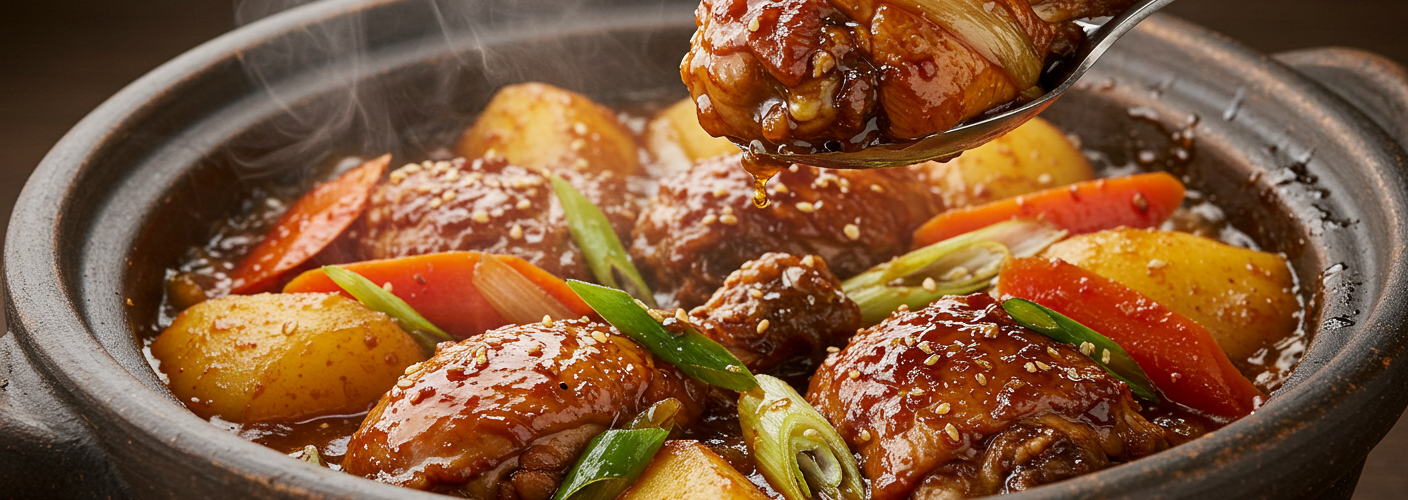If you’re searching for a dish that embodies comfort and a burst of flavor, look no further than Jjimdak. This traditional Korean delicacy is a perfect harmony of tender chicken, vibrant vegetables, and a savory ganjang-based sauce that is sure to captivate both hungry diners and culinary enthusiasts alike.
At its core, Jjimdak is a delicious combination of chicken and a colorful array of vegetables, all slow-cooked in a sauce made from ganjang, which is a type of Korean soy sauce. The dish boasts origins from the city of Andong, where it was initially prepared as a family meal. Over the years, Jjimdak has gained popularity far beyond its birthplace, becoming a favorite in Korean restaurants worldwide.
The Ingredients that Make Jjimdak Special
The beauty of Jjimdak lies not only in its taste but also in its nutritious components. A typical Jjimdak includes chicken pieces, often bone-in to enhance the flavor during cooking, and a medley of vegetables such as carrots, potatoes, onions, and green peppers. These ingredients are not only packed with nutrients but also contribute to the colorful presentation of the dish.
One of the standout aspects of Jjimdak is its sauce. Made from ganjang, which brings a depth of umami flavor, the sauce is usually enhanced with garlic, ginger, sesame oil, and sometimes a hint of spice from gochugaru (Korean red pepper flakes). The sauce is not just a coating but infuses the ingredients with flavor as they braise together, creating a mouthwatering aroma that fills the kitchen.
Cooking Tips for Perfect Jjimdak
Making Jjimdak at home can be a rewarding experience. Here are a few tips to achieve the perfect balance of flavors:
- Choose the Right Chicken: Skin-on, bone-in pieces give the best results as they provide richness and tenderness that enhance the overall dish.
- Marination is Key: Allowing the chicken to marinate in the ganjang-based sauce for at least 30 minutes—or overnight if time permits—elevates the dish, allowing the flavors to penetrate the meat deeply.
- Cooking Technique: For the best texture, steam the Jjimdak instead of boiling. This method retains moisture and keeps the chicken juicy while allowing the vegetables to cook to just the right tenderness.
- Balance the Sauce: You can adjust the sweetness, spiciness, and saltiness by adding sugar, gochugaru, or additional ganjang according to your taste preference.
Serving Suggestions
Jjimdak is typically served hot, directly from the pot. It pairs beautifully with steamed rice, which balances the salty and umami flavors of the dish. For those looking to expand their culinary experience, you can add side dishes, or “banchan,” such as pickled radish or kimchi to create a well-rounded meal.
In conclusion, Jjimdak is more than just a meal; it’s a cultural experience that brings together families and friends. With its perfect blend of flavors and textures, it invites everyone to gather and share in its captivating taste. Whether you’re enjoying it at a restaurant or trying your hand at making it at home, Jjimdak is a dish that promises comfort and satisfaction. So why not indulge in this wonderful Korean dish? You just might discover a new favorite!




Add comment